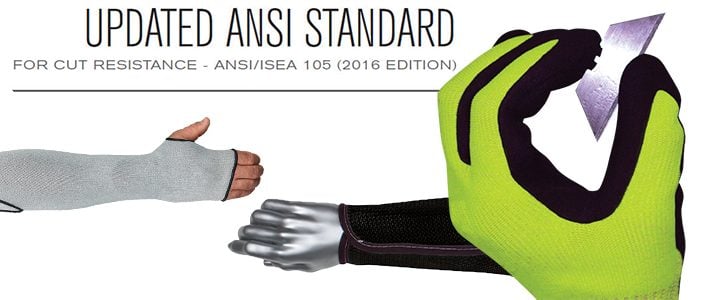Not long ago, the ANSI/ISEA 105 standard was updated in 2016. The American National Standards Institute (ANSI) released this revised edition. Which is was for the ANSI cut score /resistance. Whether you’re using gloves or sleeves to protect against cuts, be aware of changes. We’ll walk you through some of the updates for the latest ANSI/ISEA 105 Standard.
New Classification for ANSI Cut Levels
One of the biggest changes was the new classification levels for cut resistance. Previously, there were 5 cut levels but too many scores got lumped together. With the new classifications, there are 9 new ANSI cut levels. This will allow better defining protection for all levels of cut resistance. And it helps to reduce the gap in each level. New scores now have an “A” in front of the score (for example A1).
Secondly, there is a new ANSI cut test – the ASTM F2992-15 by the TDM-100 machine. With the previous test, manufacturers could use two machines, TDM-100 or the CPPT. Which got somewhat confusing when you had to compare scores to two machines. But now using only the TDM machine, manufacturers can have uniform testing. It makes it easier to compare gram scores for a material type.
And while these changes were from last year (2016), it still takes time to update all inventory. Many of the spec sheets from vendors have updated but there still may be a few out there that have not.
These changes give the users a more accurate picture towards cut resistance levels.Many of the cut resistant gloves that Full Source carries can be found here as well as cut resistant sleeves. Knowledge is power when it comes to cut protection – ANSI cut levels. Understand how these updates can affect your glove or cut sleeves and adjust. The ANSI/ISEA Standard 105-2016 updates were much needed for safety.





2 Comments
Pingback: West Chester Protective Gear by PIP | Full Source Blog
Pingback: What Does ANSI Mean? | Full Source Blog